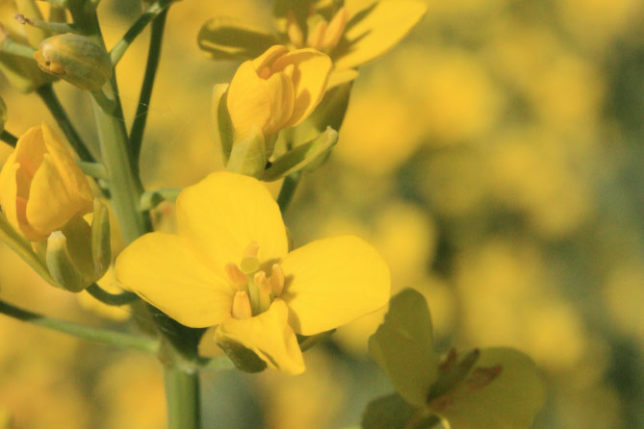Canola is one of the main crops for Western Canadian farmers and it is also one of the crops with the most disease potential. It is important that disease management decisions are made on a farm-by-farm, and even field-by-field basis. Crop scouting and assessing is essential, but there are some common canola diseases in Western Canada that are always good to have on your radar.
Sclerotinia
Sclerotinia could be the most common canola disease in Western Canada and it is something that has great potential to infect your canola every year. “I think it’s safe to say that we will have sclerotia bodies overwintering in our fields every year,” says Angela Brackenreed, agronomist with the Canola Council of Canada. Considering that yield loss is 50 percent in infected canola, it’s important to account for the possibility.
Sclerotina can not be controlled once the symptoms are observed, according the Saskatchewan Ministry of Agriculture, so it is important to spray based on the risk assessment during flowering. During the weeks surrounding flowering, assess the crop for moisture, which is what Sclerotinia infection relies on. If there have been a couple of weeks of dry, warm weather, you shouldn’t need to spray. Brackenreed recommends penciling in a fungicide now and opting not to spray when the time comes if you feel your crop has low yield potential and/or conditions surrounding flowering are extremely hot and dry.
Blackleg
Blackleg is a disease seen in Manitoba every year, and a study by the Saskatchewan Ministry of Agriculture showed that blackleg was found in 35 to 55 percent of Saskatchewan crops. Susceptibility comes from certain varieties, growing canola in a tight rotation, using the same variety/resistance source repeatedly in rotation, and not controlling weeds and volunteer canola in your crop.
“It is important to understand that even varieties with an R-rating to blackleg can have infection and yield loss from the disease,” says Brackenreed. Fungicides registered for blackleg can be applied around herbicide timing, but Brackenreed noted that they are most economical when used on a susceptible crop with high blackleg pressure.
Clubroot
“I think every producer should be on the lookout for symptoms of clubroot this season,” says Brackenreed. You may not have seen symptoms of clubroot in your field in the past, but Brackenreed stresses that it does not mean you do not have clubroot in your field now. Spore concentrations can be low enough in a field that they are not produced on a plant, but left unchecked, says Brackenreed, those concentrations have the potential to create serious yield loss when they increase.
The potential for these diseases in one of the most profitable crops in Western Canada highlights the importance of scouting your crop throughout the season to catch the signs early. Pay attention to what could happen and be prepared. Maintain healthy potential for high yields will be worth it.
Sources
http://www.agriculture.gov.sk.ca/Default.aspx?DN=da235d53-4d3b-448f-9942-fc4ce40cee93
http://www.agriculture.gov.sk.ca/Default.aspx?DN=a8664793-a3e6-4c6d-b36a-0dda36e735c7







Leave A Comment